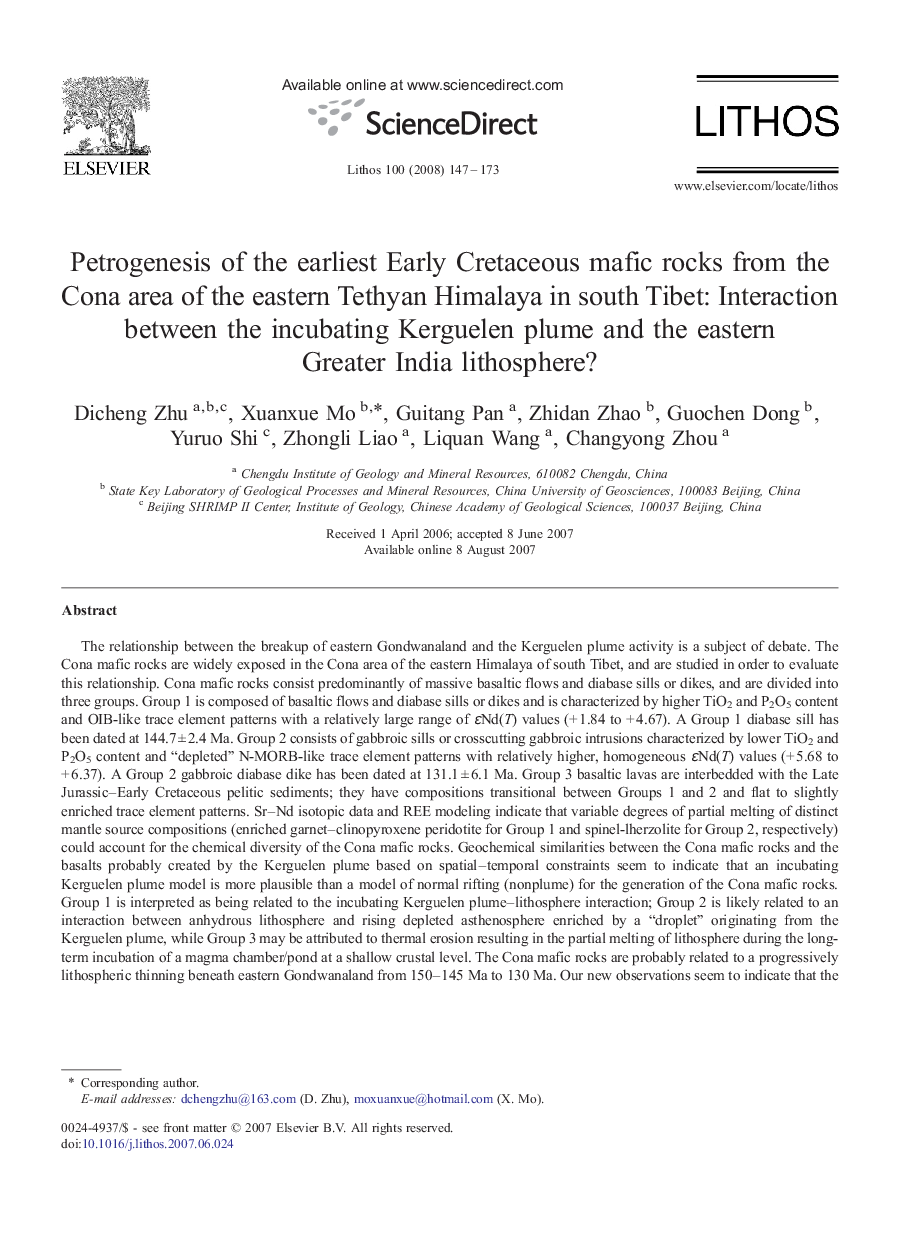| کد مقاله | کد نشریه | سال انتشار | مقاله انگلیسی | نسخه تمام متن |
|---|---|---|---|---|
| 4717667 | 1638761 | 2008 | 27 صفحه PDF | دانلود رایگان |

The relationship between the breakup of eastern Gondwanaland and the Kerguelen plume activity is a subject of debate. The Cona mafic rocks are widely exposed in the Cona area of the eastern Himalaya of south Tibet, and are studied in order to evaluate this relationship. Cona mafic rocks consist predominantly of massive basaltic flows and diabase sills or dikes, and are divided into three groups. Group 1 is composed of basaltic flows and diabase sills or dikes and is characterized by higher TiO2 and P2O5 content and OIB-like trace element patterns with a relatively large range of ɛNd(T) values (+ 1.84 to + 4.67). A Group 1 diabase sill has been dated at 144.7 ± 2.4 Ma. Group 2 consists of gabbroic sills or crosscutting gabbroic intrusions characterized by lower TiO2 and P2O5 content and “depleted” N-MORB-like trace element patterns with relatively higher, homogeneous ɛNd(T) values (+ 5.68 to + 6.37). A Group 2 gabbroic diabase dike has been dated at 131.1 ± 6.1 Ma. Group 3 basaltic lavas are interbedded with the Late Jurassic–Early Cretaceous pelitic sediments; they have compositions transitional between Groups 1 and 2 and flat to slightly enriched trace element patterns. Sr–Nd isotopic data and REE modeling indicate that variable degrees of partial melting of distinct mantle source compositions (enriched garnet–clinopyroxene peridotite for Group 1 and spinel-lherzolite for Group 2, respectively) could account for the chemical diversity of the Cona mafic rocks. Geochemical similarities between the Cona mafic rocks and the basalts probably created by the Kerguelen plume based on spatial–temporal constraints seem to indicate that an incubating Kerguelen plume model is more plausible than a model of normal rifting (nonplume) for the generation of the Cona mafic rocks. Group 1 is interpreted as being related to the incubating Kerguelen plume–lithosphere interaction; Group 2 is likely related to an interaction between anhydrous lithosphere and rising depleted asthenosphere enriched by a “droplet” originating from the Kerguelen plume, while Group 3 may be attributed to thermal erosion resulting in the partial melting of lithosphere during the long-term incubation of a magma chamber/pond at a shallow crustal level. The Cona mafic rocks are probably related to a progressively lithospheric thinning beneath eastern Gondwanaland from 150–145 Ma to 130 Ma. Our new observations seem to indicate that the Kerguelen plume may have started its incubation as early as the latest Jurassic or earliest Cretaceous period and that the incubating Kerguelen plume may play an active role in the breakup of Greater India, eastern India, and northwestern Australia.
Journal: Lithos - Volume 100, Issues 1–4, January 2008, Pages 147–173